

The Music of Tsugaru
|
Japan has a rich history of music, with a repertoire of traditional instruments that are still used in performances today. One traditional stringed instrument that many may recognise is the shamisen (三味線), a lute-like instrument. The square body of the shamisen is made by stretching cat skin over pieces of wood, creating a hollow body like a drum. The distinctive neck of the instrument is made of three or four separate pieces; this is so that the shamisen can be easily disassembled and stored away. The three strings that stretch across the neck are made traditionally of silk, but less-experienced players may use nylon strings, which are more durable and less expensive than silk. Sounds are produced by striking a gingko leaf-shaped plectrum, known as a bachi (撥), on the strings.
Shamisen can come in three basic sizes, with the hosozao possessing a thin neck, the chuzao having a middle-sized one, and the futazao having the thickest neck amongst the three. Whether a musician uses a thin- or a thick-necked shamisen depends on the requirements of the performance. The gentle sound of the thin-necked shamisen is perfect for virtuosic pieces, while thicker necks produce louder, more robust sounds. The variety and range of the shamisen means that it can be played solo or in an ensemble, or together with other traditional Japanese instruments. It can also be used to accompany singing, such as in kouta (小唄) performances, which refer to short songs learned and performed by geisha and maiko. The shamisen plays an important role not only in the musical traditions of Japan, but also in its performing arts. Bunraku (文楽) puppet theatre and Kabuki (歌舞伎) drama performances are incomplete without the accompaniment of musicians, amongst which there is sure to be a shamisen player. Striking the strings of their shamisen, these musicians provide a lush and emotive soundtrack to each performance. Friends of JCC may remember Love and Mercy: Into the World of Bunraku, an exclusive Bunraku performance held in October 2019 to celebrate the 10th Anniversary of Japan Creative Centre. On top of the stunning visual spectacle put on by the puppeteers, the performance also featured the musical accompaniment of one of Japan’s most lauded musicians in the world of Bunraku. In contrast with the stately and rhythmic style of music the shamisen is mostly used to create, when the shamisen is played in Tsugaru style, musicians take a departure from what is considered the usual. The dynamic and wild way that the shamisen is played in Tsugaru-shamisen (津軽三味線) style is often likened to whipping blizzard winds, and is reminiscent of genres like blues, folk, and even rock ‘n’ roll. This genre of shamisen music originated from the Tsugaru district in present-day Aomori prefecture, and although it is now commonly recognised and performed throughout the country, its associations with its place of origin remain strong. |
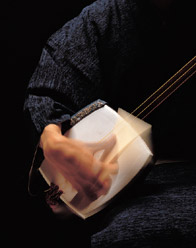 Plucking the shamisen with a plectrum (player: Sugiura So) 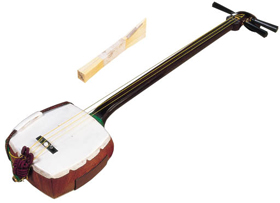 Photo: Sugawara Chiyoshi 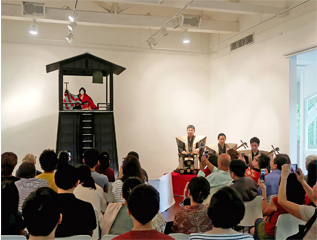 © JCC 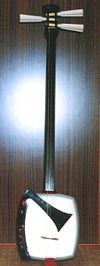 © Web Japan |
|
In the beginning, Tsugaru-shamisen was used simply as background music for folk singers. The Meiji era saw this style flourishing on its own sans vocal accompaniment. Musicians of the time developed new techniques and honed the Tsugaru-shamisen style into an art form that was seen as powerful and emotive. By the 1960s, Tsugaru-shamisen had cultivated a crowd of enthusiastic fans across Japan, with some players even amassing a following abroad. Many players were able to perform in concerts overseas, spreading the charm of Tsugaru-shamisen, and of the shamisen itself, even further.
Chisato Yamada, an Aomori native, is one of the best-known Tsugaru-shamisen artists in Japan. He began a music apprenticeship at the age of 15, after watching a deeply moving performance by a master Tsugaru-shamisen musician. At 18, he began touring around Aomori and neighbouring prefectures, performing Tsugaru-shamisen with his friends. His stirring performances have earned him many young fans, with several even applying to be his apprentices and students. He has also released many records, tapes, and CDs, which has attracted a large number of non-Japanese fans to Tsugaru-shamisen and to Aomori. Even with its nationwide popularity, Tsugaru-shamisen remains firmly rooted in the culture and landscape of Aomori. Well-loved by the people of Aomori, exhilarating Tsugaru-shamisen performances can be enjoyed in a variety of places, from large concert halls to cosy pubs. This genre of music is just one of many of the traditional charms of Aomori Prefecture. |
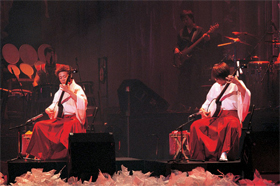 © Sony Music Records 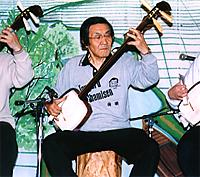 © Web Japan 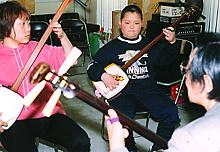 © Web Japan |
Resources
|
Tsugaru shamisen - AOMORI | IS JAPAN COOL?. Retrieved 17 August 2020, from https://www.ana-cooljapan.com/destinations/aomori/tsugarushamisen |
|
Japan Creative Centre 4 Nassim Road, Singapore 258372 +65 6737 0434 / jcc@sn.mofa.go.jp https://www.sg.emb-japan.go.jp/JCC/ Nearest parking at Orchard Hotel & Delphi Orchard |
 |